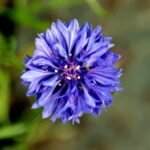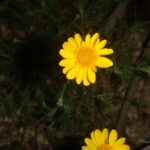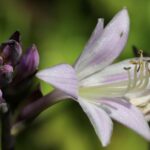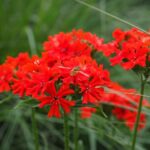Planting and propagation of the Delta maidenhair fern

The process of planting and propagating the Delta maidenhair fern is a delicate operation that requires a gentle touch and a clear understanding of the plant’s sensitive nature. When bringing a new fern home or repotting an existing one, the primary goal is to minimize stress on its fine, fibrous root system. The selection of the appropriate container and a well-aerated, moisture-retentive potting medium forms the very foundation of its future health. Successful establishment after planting is contingent upon recreating the humid, sheltered conditions of its native tropical undergrowth, ensuring a seamless transition into its new environment.
Planting this fern is not merely about placing it in a pot of soil; it is about creating an entire ecosystem that supports its specific needs. The roots are exceptionally fine and can be easily damaged by rough handling or compacted soil. Therefore, when potting or repotting, it is crucial to handle the root ball with extreme care, teasing out any circling roots gently rather than tearing them. The new pot should only be slightly larger than the previous one, as a container that is too large will hold excess moisture, increasing the risk of root rot.
Propagation offers a rewarding way to create new plants from a healthy, mature specimen, allowing enthusiasts to expand their collection or share with others. The most reliable and common method for propagating the Delta maidenhair fern is through division, which involves carefully separating the root ball into smaller sections. This process, while seemingly invasive, can also rejuvenate an older, overcrowded plant. Timing and technique are critical to ensure both the parent plant and the new divisions recover and thrive.
Understanding the fern’s reproductive cycle provides insight into other, though less common, propagation methods. Ferns reproduce via spores, not seeds, which are the tiny, dust-like particles found in clusters (sori) on the undersides of mature fronds. Growing ferns from spores is a fascinating but lengthy and challenging process, requiring sterile conditions and a great deal of patience. While not a typical method for the home gardener, it represents the ultimate horticultural challenge and a deeper connection to the life cycle of these ancient plants.
Selecting the right container and soil
The success of planting a Delta maidenhair fern begins long before the plant is placed in its new home; it starts with the careful selection of the container and potting medium. The choice of pot plays a crucial role in managing the soil’s moisture level. Unlike many houseplants, this fern does not fare well in porous terracotta pots, which wick moisture away from the soil too rapidly. It is far better to choose a non-porous container, such as one made from glazed ceramic or plastic, which will help maintain the consistent dampness that the fern’s roots require to stay healthy.
More articles on this topic
Regardless of the material, adequate drainage is absolutely paramount. The chosen pot must have drainage holes at the bottom to allow any excess water to escape freely. Without proper drainage, water will accumulate at the bottom of the pot, creating an anaerobic environment that is a breeding ground for fungal pathogens and will inevitably lead to root rot. It is important to select a pot that is only marginally larger—perhaps 2-3 centimeters wider in diameter—than the current root ball. A pot that is too large holds a greater volume of soil, which stays wet for longer and can suffocate the delicate roots.
The composition of the potting soil is equally critical. A generic, all-purpose potting mix will not suffice, as it is typically too dense and lacks the aeration needed for the fine, hair-like roots of the maidenhair fern. The ideal mix should be light, airy, and rich in organic matter. A good base for the mix is sphagnum peat moss, which is moisture-retentive and provides the slightly acidic environment that ferns favor. This should be amended to improve its structure and drainage.
To create the perfect custom blend, start with a peat-based mix and incorporate generous amounts of perlite or vermiculite to enhance aeration and prevent compaction. Adding organic components like leaf mold or well-rotted compost will not only improve the soil structure but also provide a slow, steady supply of nutrients. The goal is to create a medium that feels like the rich, loamy floor of a forest: one that can hold moisture like a sponge but still allows air to circulate freely around the roots.
The repotting process step-by-step
Repotting a Delta maidenhair fern should be undertaken with care and precision to avoid shocking the plant. It is best to repot in the spring, at the beginning of the growing season, which gives the plant ample time to recover and establish itself in its new container. Avoid repotting a plant that is already under stress from pests, disease, or improper care; it is important to address these issues first. A clear sign that a fern needs repotting is when roots begin to emerge from the drainage holes or the plant’s growth has slowed significantly.
More articles on this topic
Begin by preparing the new pot and the fresh potting mix. Water the fern thoroughly a day or two before repotting, as this will help the root ball slide out of the old pot more easily and ensures the plant is well-hydrated. To remove the fern, gently turn the pot on its side and tap it to loosen the soil. Support the base of the stems with one hand while carefully sliding the plant out. Avoid pulling on the delicate fronds, as they can break easily.
Once the fern is out of its pot, inspect the root ball. If the roots are tightly wound in a dense mass, a condition known as being ‘root-bound’, you will need to gently loosen them. Use your fingers or a small, sterile tool to carefully tease apart the roots at the bottom and sides of the root ball. This encourages the roots to grow outwards into the new soil rather than continuing to circle. Be as gentle as possible during this process to minimize root damage.
Place a small layer of the fresh potting mix at the bottom of the new pot. Position the fern in the center of the pot, ensuring that the top of the root ball sits about an inch below the rim. Fill in the space around the root ball with the new soil mixture, gently firming it down with your fingers to eliminate any large air pockets. Water the plant thoroughly after repotting, allowing the excess to drain completely. Place the newly repotted fern back in its ideal location with high humidity to help it recover from the stress of the process.
Propagation through division
Division is the most straightforward and effective method for propagating a Delta maidenhair fern, and it is best performed in the spring when the plant is entering its active growth phase. This method involves separating a mature, healthy plant into two or more smaller sections, each with its own portion of roots and fronds. Choose a plant that is well-established, dense, and perhaps slightly overgrown for its pot, as this will ensure that each division is a viable size and has a good chance of survival.
To begin the process, carefully remove the entire plant from its pot, following the same initial steps as for repotting. Lay the plant on its side on a clean surface and gently brush away some of the excess soil to get a better view of the root structure and the rhizomes. The rhizomes are the creeping underground stems from which the fronds and roots grow. Identify natural clumps or sections within the root mass that can be separated with minimal damage.
Using a clean, sharp knife or a pair of sterilized garden shears, carefully cut through the root ball and rhizomes to separate the plant into the desired number of divisions. Ensure that each new section has a healthy cluster of fronds and a substantial portion of the root system attached. Attempting to create too many small divisions from one plant can be risky, as smaller sections have fewer resources to draw upon for recovery. It is better to create two or three strong divisions than multiple weak ones.
Once the divisions have been made, pot each one into its own appropriately sized container using a fresh, suitable potting mix. Plant them at the same depth they were growing at previously and water them thoroughly. The newly divided ferns will be in a state of shock and require extra care for the first few weeks. Place them in a location with very high humidity and indirect light, and keep the soil consistently moist but not waterlogged. It may take several weeks for them to establish and begin producing new growth.
Growing from spores
Propagating Delta maidenhair ferns from spores is a complex and lengthy process that offers a deeply rewarding experience for the patient and meticulous gardener. Spores are not seeds; they are single cells that develop into a new plant through a two-stage life cycle. The first step is to collect the spores from a healthy, mature fern. Look for small, brown or black dots arranged in patterns on the undersides of the fronds; these are the sori, which contain the dust-like spores.
To collect the spores, carefully cut a frond that has mature, but not yet opened, sori. Place the frond, sori-side down, on a clean sheet of white paper and leave it in a dry, draft-free location for a few days. As the frond dries, the sori will release the spores, which will appear as a fine, colored dust on the paper. This dust is what you will use to grow new ferns. It is essential that all equipment used in this process is sterilized to prevent contamination from mold or fungi.
The next step is to prepare a sterile growing medium. A common choice is a mixture of peat moss and sand, which should be sterilized by baking it in an oven or heating it in a microwave until it is hot all the way through. Allow the medium to cool completely, then place it in a clean, shallow tray or pot with drainage holes. Moisten the medium thoroughly with distilled or boiled and cooled water until it is damp but not saturated.
Gently and evenly sprinkle the collected spores over the surface of the sterile medium. Do not cover the spores with soil, as they require light for germination. Cover the container with a clear plastic lid or place it inside a clear plastic bag to create a high-humidity environment. Place the container in a warm location with bright, indirect light. Germination can take anywhere from a few weeks to several months, during which time a green, moss-like film, called the prothallus, will form. It is from this structure that the tiny new fern plants will eventually emerge.


















